This story is based on a 2013 interview, with 2019 update.
Jim Koan has been growing apples at Almar Farm and Orchards in eastern Michigan near Flushing for more than forty years. Although the soils in eastern Michigan are heavier and the climate more variable than the ideal fruit-growing conditions found in western Michigan, Almar is Jim’s home and he wanted to continue the Koan tradition of growing apples there. When he took over the family business in the mid-eighties, Jim grew apples using industrial methods like his father before him. But after a decade managing the farm he became interested in Integrated Pest Management (IPM) as a way to cut costs and reduce environmental impacts. Early success with IPM encouraged him to make the transition into certified organic production.
Today Jim, his wife Karen and three of their five children work together on Almar’s 500 acres, producing thirty varieties of organic apples in a 150-acre orchard as well as pumpkins, corn, soybeans, wheat, barley and pasture. About 30 acres of apples are intensively managed for fresh market sales, while the rest are processed on-farm into hard cider and other apple products. About 150 pasture-raised hogs are farrowed and finished each year on the farm. Jim uses a Swedish sandwich system to reduce soil erosion and enhance soil quality in his orchards and manages native wildflower planting to encourage beneficial insects, reduce pests and improve apple pollination.
Jim has been recognized over the years for a number of innovative practices on his farm, but most recently he has received a lot of attention for the successful integration of livestock — pigs and poultry — into his apple production system. Jim pastures heritage-breed pigs in the apple orchards to clean up fallen apples that harbor the plum curculio, a weevil that is one of the most destructive pests of organic apples. The pigs also help to build soil quality and manage weeds. Jim feeds them on apple pomace, the paste left over from pressing apples for cider. Jim direct markets his finished hogs as pasture-raised, apple-finished pork and sells a number of other value-added products from the apples he grows on the farm, including apple cider, apple cider vinegar and an award-winning hard cider that has been made on the farm since the 1850s. The hard ciders are distributed nationally, while fresh apples and the other processed products are sold directly through an on-farm store.
Over the last decade, Jim has noticed a number of weather changes that have increasingly complicated his farm management. Weather extremes are getting more extreme and disease and insects seem to be getting harder to control. “With the changing weather that we have now,” Jim says, “every year the extremes seem to be getting more extreme. If we’re going to get rain, we’re going to get a lot more rain than usual. We’ll get deluges, not the three or four inches of the past, but we’ll get five or six inches. Or we’ll get snowstorms, or extreme heat, or droughts, and so forth. Those are very disruptive to the natural balance of nature, of insects and disease.
“Variable spring weather has always been a significant factor in tree fruit production in Michigan and elsewhere, but as Jim explains, the risks have grown. “Recently, the biggest challenge has been the warmer weather in March. Normally we’ll get several days in the 60s and then we’ll drop down again to some 30-, 40-degree days, while the nights drop to freezing or below freezing. Now, instead of getting a few days of 60, 65, it will be 75, 80 degrees. Well, it doesn’t take many days of those kind of temperatures to accelerate our trees waking up and then we end up with earlier bloom even though we still usually have a few significant freezes in the later half of April or early May. Two years ago [2012], the whole state of Michigan had a 10-percent crop of apples. Worst freeze since nineteen forty-five, I believe.”
Jim wonders if part of the trouble has to do with the Great Lakes not freezing over in winter like they used to. “Michigan has always been a great fruit growing area for cherries and apples and peaches and what not, your perennial crops,” Jim explains. “Because the Great Lakes, that ice was a huge cold sink. So in March, when we did get these little warming trends that might wake the trees up, we had that ice all around us to help buffer that. The Great Lakes haven’t been freezing over like they have in the past and therefore we have lost that buffering.”
Heavy rainfall and storms are becoming increasingly destructive, according to Jim. “Two years ago [2012], in August, we had the most rain in a hundred years,” says Jim. “Broke the hundred-year record, okay? In one night we got six inches of rain — unheard of. The orchards and everything was all flooded over. The water overflooded the banks for the first time that I can remember and ripped out a bunch of trees and fences. The animals were all running around the farm. It seems like we are getting one snowstorm after another now, followed by extreme temperatures and windchills, and then warming trends. It’s not just one event every ten years anymore. It’s just going from one extreme to the other and those changes are extreme within the weather cycle.”
In an effort to reduce the risks associated with more variable weather, Jim has made several adjustments in production and marketing. He has added more drainage to his orchard, transitioned to more disease-resistant varieties and diversified his product mix. Jim began installing tile drainage in his orchard about fifteen or twenty years ago. Initially he laid tile drains every fifty feet: “In any new orchards before that, nobody tiled orchards. Now on my new orchards, I tile every twenty-eight feet. It’s not just that I’m tiling, but that I’m actually having to get them closer together to get the excess water out of the soil more quickly.” Jim is quick to point out that not all growers in his region have had to add additional drainage. His orchards are on heavy soils with poor drainage to begin with, but more extreme rainfall events have made drainage even more important.
Jim says that other fruit growers in eastern Michigan have adapted to more variable spring weather by adding wind machines for frost protection, and many are abandoning high-risk areas. Jim explains, “Almost all the apple growers in Michigan that can afford it have bought wind machines to protect against frost. If they had two wind machines, they bought two more for other sites where they weren’t needed before. They’re also looking at replacing fruit crops with grain crops in the poorer sites and only using the very best sites for fruit crops because the input costs for fruit production are so high today that you can’t afford not to get a full crop.”
Jim used to grow sixteen different kinds of fruits, but today he grows only apples. Increases in production costs, weather-related risks and changing consumer preferences have all played a part in his decision to reduce the diversity of fruit types at Almar Farm and Orchards. “When I first started growing thirty years ago,” Jim explains, “it was nothing to sell two hundred bushels of peaches in a couple of days from the farm store. A housewife would come out and buy a bushel or two of peaches and then take them home and ripen them and can them and then two or three days later come back and get another batch, and come back a third time maybe three weeks after that and still get another half bushel to eat out of hand and maybe make some peach pies and cobblers and whatnot. But now, people can go to the store and buy fresh peaches to eat on the table, put in their fruit bowl and eat almost year round. Those peaches are going to be from Chile or whatever, but at least they can buy them. So they don’t can them anymore. People quit canning pears, same thing with peaches. So I don’t grow peaches and I don’t grow pears. Now I don’t sell two hundred bushel of fresh fruit in the whole season, you know?”
While he still maintains a diverse mix of apple varieties in the orchard, Jim says it can be difficult selling them in a market defined by year-round availability of a limited variety of apples. Like Steve Ela, Jim finds direct marketing gives him some flexibility to select apple varieties that are well adapted to the changing climate conditions on his farm. As the weather has become more variable, Jim has transitioned to more disease- and insect-resistant varieties, which sometimes require some consumer education. Jim explains: “I’m planting varieties that are more disease- or insect-resistant, but consumers don’t want them because they’ve been programmed by advertisements to think that Gala is a wonderful apple or Red Delicious or Golden Delicious, Braeburn, Fuji or whatever. More than two thousand commercial apple varieties have been grown in the United States in the past. We’re down to just a few varieties now because consumers have been brainwashed that these are what tastes best.”
Jim tells the story of how he successfully sold his customers on an apple variety that he is particularly fond of growing, called Gold Rush. “It is a fantastic eating apple, but it is ugly,” he says. “It has these big pores in the skin called lentils and people didn’t think it looked good. If I took a Gold Rush apple and put that in a grocery store, the grocery store couldn’t sell them because consumers don’t know what a Gold Rush is. They know what a McIntosh is, so the Gold Rush is not going to get sold sitting next to a McIntosh. But that’s a big problem, because it is extremely difficult to grow an organic McIntosh. We grow four, five thousand bushels a year, but they’re extremely difficult to grow. But the Gold Rush is a more sustainable apple. So I put up a sign in our farm store one year, a really big sign that said, ‘Gold Rush, the ugliest, best-tasting apple in the world.’ That aroused customer curiosity. People went and bought them and they came back and bought more. Now we’ve got a really strong Gold Rush consumer demand in our area. I introduce the people to these other varieties and they love them and they come back and buy them for eating fresh out of hand. But it’s an education. I’m educating a consumer in order to sell these apples. You can’t do that for thousands of bushels of fresh apples. You don’t have the time to do that, you know?”
Jim has increasingly focused on marketing processed products in an effort to build a sustainable business model. He has sought out products that allow him to avoid competing in international and national commodity markets, as well as allowing him to continue to use sustainable practices like the integration of livestock into his orchard production system. Jim saw the federal food safety regulations like GAP and the FSP as a real threat to his freedom to farm sustainably. So he began thinking about how to transition from fresh products to processed products that would allow him to meet new regulations without having to change production practices. Jim explains, “We raise pigs because they’re part of the system. I use them for insect and disease control and I can sell their meat as a protein source. Almost all of our apples are processed on the farm and made into juice. Fifty percent of that bushel is still food. Even though the juice is taken out and fed to humans you’ve got all this other good nutrition left in the pomace. That goes to feed our pigs and then we use their manure for fertility in the orchard. We work as a team. It looks like with the GAP and new food safety regulations I won’t be able to raise livestock on my farm anymore. For a sustainable farm you have to have an integration of livestock and crops. It’s not like CAFO operations where somebody’s got a thousand head of swine locked up in the barn and they’re pumping corn through them for six months and then selling them.”
Jim wanted to find a way to keep the pigs in the production system under the new food safety regulations. He started thinking about processing apples into an alcoholic beverage that would eliminate any food safety concerns. In 2009, just a few years ahead of the boom, Jim developed a line of hard ciders under the JK Scrumpy’s label. The new product allowed him to keep pigs in his apple orchard and provided other unexpected benefits as well, like expanding his customer base. “Now I sell interstate all over the United States,” Jim says. “I have distributors for my product. It’s shelf-stable so I don’t have to worry about having to sell it right now.”
Jim also learned that a shelf-stable addition to his product mix provided a buffer to weather variability and extremes. “In 2012, as an example,” he explains, “we had only had 10-percent crop of apples. I had half a million dollars invested in those apples. That was not as big an issue for me as it would have been if we hadn’t had JK Scrumpy’s, because the year before that I had had a huge crop. I had fermented a whole bunch of those apples and they were just sitting there on the farm, in the bank, so to speak. I still had a non-perishable profit from the year before, so 2012 didn’t disrupt my cash flow too much. I can walk away comfortably saying that I actually made a profit in 2012, not only because of the surplus I had stockpiled from 2011, but also because I was forced to think out of the box and do things differently. I really came out ahead of the game.”
Jim appreciates the opportunities that recent weather challenges have created for his business. He says they have forced him to think out of the box, anticipate what could go wrong, and plan for the worst-case scenario. He has focused a lot of attention on developing a business that is robust to what he views as both political as well as climate risks. Thinking about the future, Jim is confident he can handle the biological challenges, but he is concerned about political and regulatory challenges to sustainable agriculture and local food production. “I’m better prepared than people who just go along thinking everything is business as usual,” says Jim. “You could say I have developed a sustainable business plan that protects me from both political and weather extremes.”
Since 2013, the Koans have continued to develop their business in response to changing weather patterns as well as changes in labor availability and customer behavior. The farm now supports 10 year-around full time employees, plus 12 seasonal experienced apple pickers for the apple harvest season from late August to November. For the last five years, Jim has participated in H-2A visa program for temporary agricultural workers to recruit experienced apple pickers that return to the farm each year. Jim says the program is “expensive, but workable.”
The hard cider operation, now managed by Jim’s son Zach, has been expanded and automated and a new tasting area and on-farm store has been developed, complete with seating and a children’s play area. “We’ve moved back into giving more attention to the agritourism end of our operation,” Jim explains, “because more and more families seem to understand how important healthy food is to their long-term health and they are seeking out fresh organic food. Since we last talked, we’ve seen a big change in our customers – now most of the customers visiting our farm are buying apples to make their own apple sauce and other products just as they did 25 years ago. And people are curious about our unusual varieties. They want to know the history of each variety and how they taste. I would never have believed we would come full circle and get back to eating homemade food together.”
Weather has become the most important factor in the success of the farm, according to Jim. “It used to be that about once every 7 years we could expect less than half a crop of apples because of a late spring freeze. We’ve had these kinds of losses 4 out of the last five years. We are surviving because we’ve cut our orchard size down from 150 to 80 acres, we’ve quit selling our apples to big companies, and we’re focused on growing only the very most profitable varieties.”
Jim was the first apple grower in Michigan to transition to certified organic production. He has been actively involved in the leadership of many sustainable agriculture and organic farming organizations over the years and is a longtime collaborator in on-farm experiments with Michigan State University faculty and staff. In 2013, Jim’s long years of dedication towards the improvement of the Michigan fruit industry was recognized with a Distinguished Service Award from the Michigan State Horticultural Society.



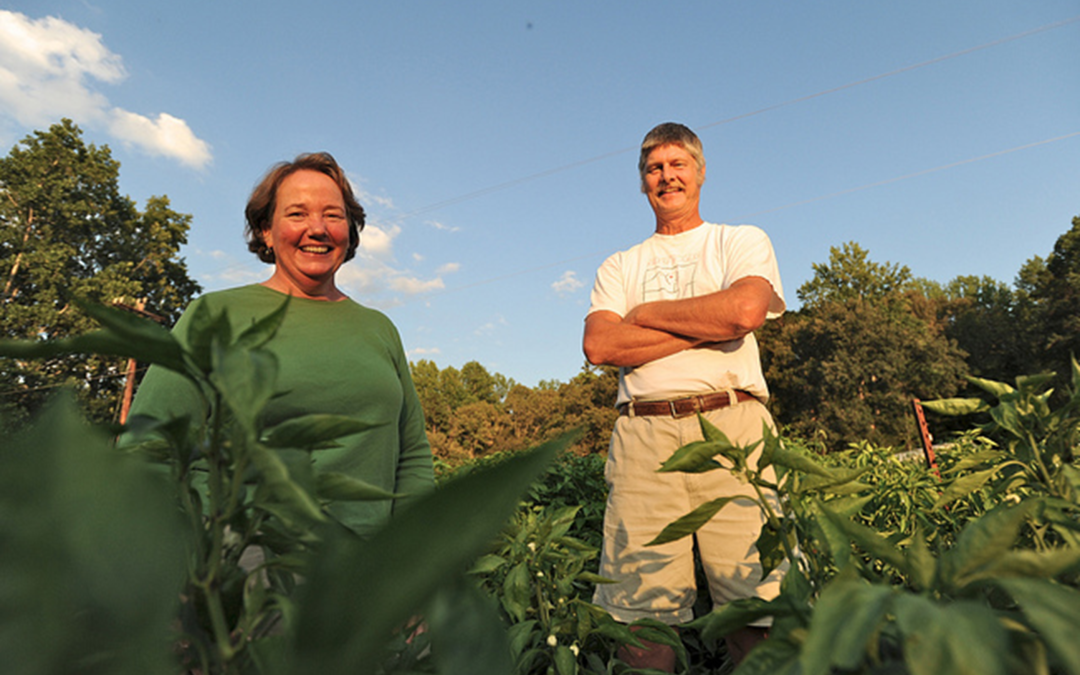
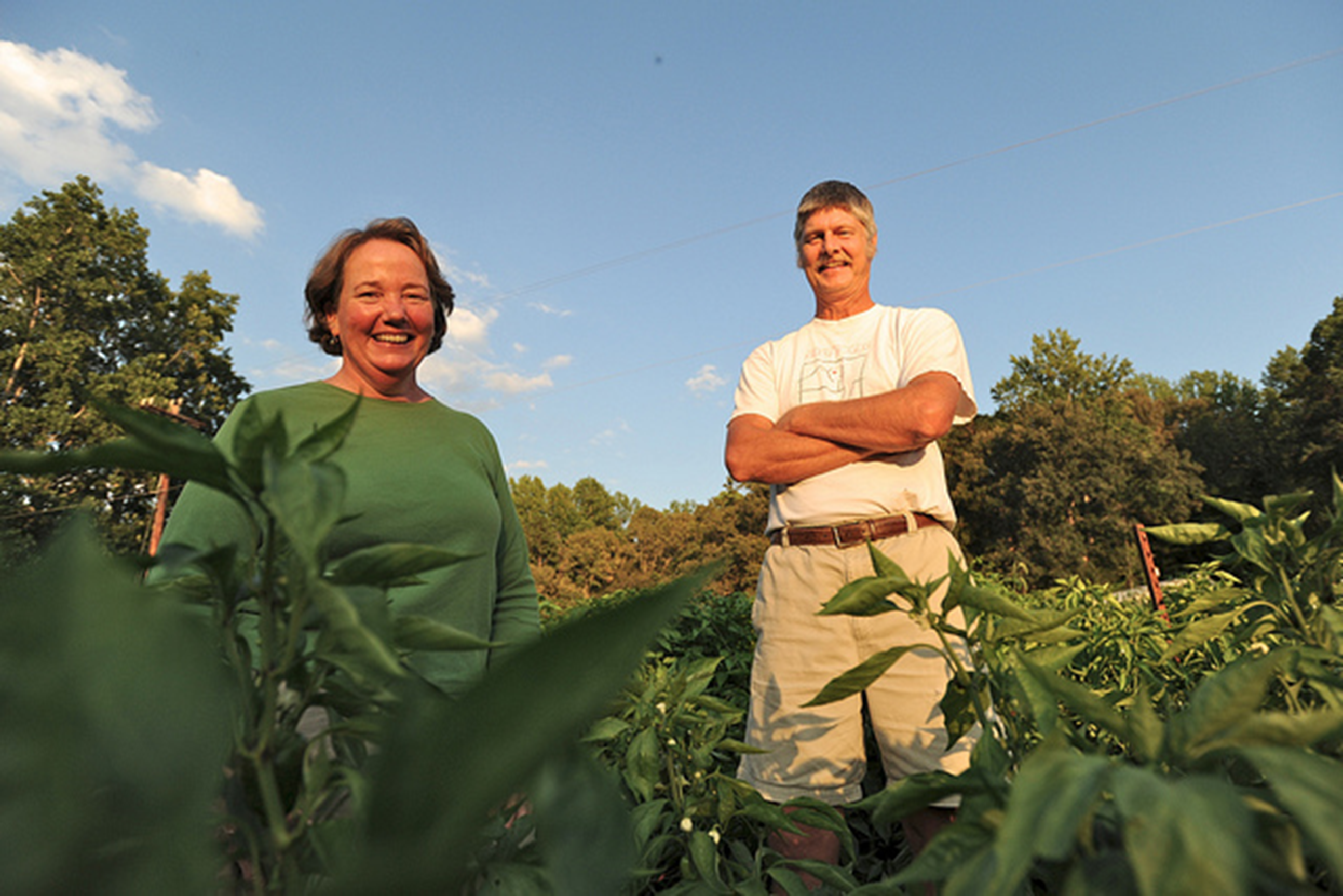
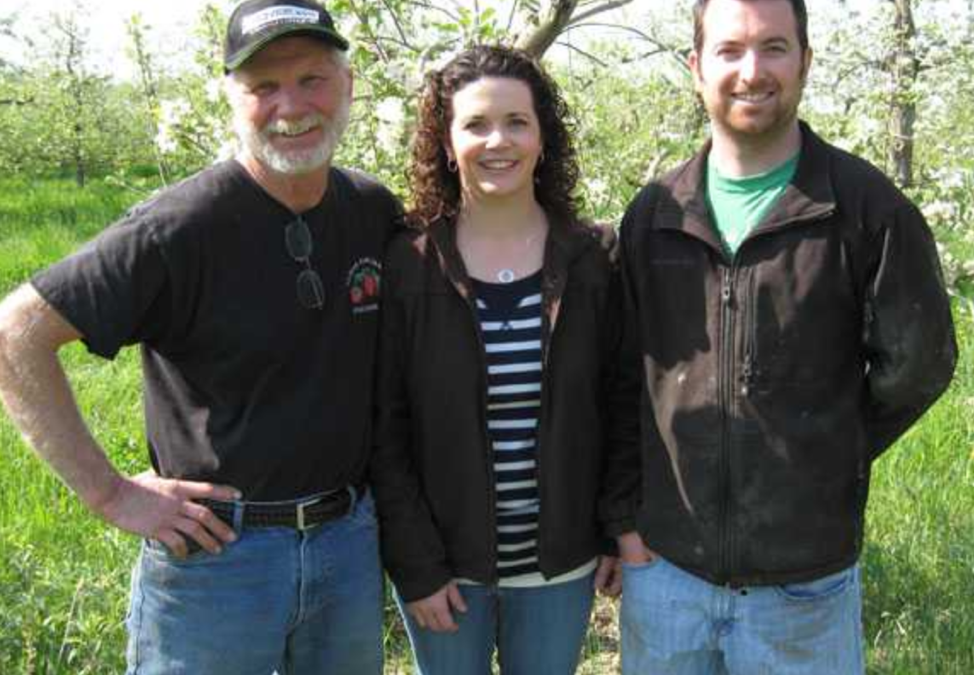

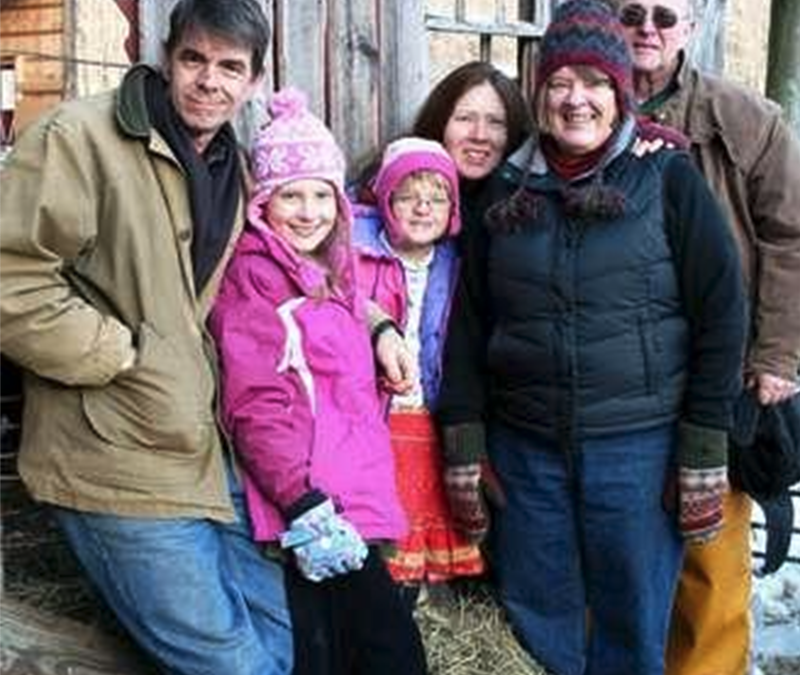
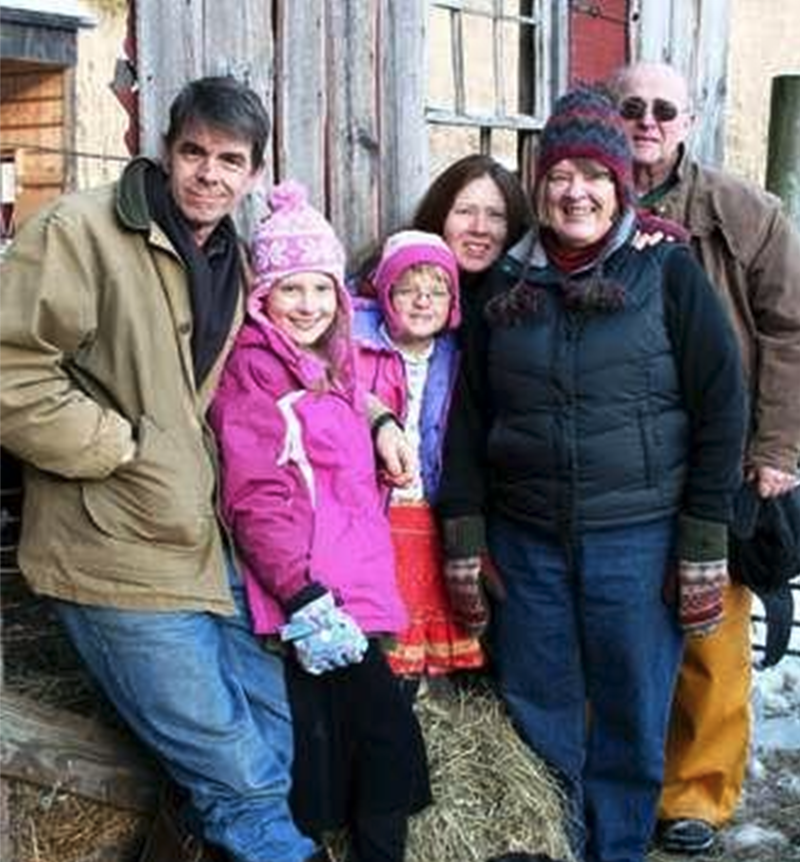


Recent Comments